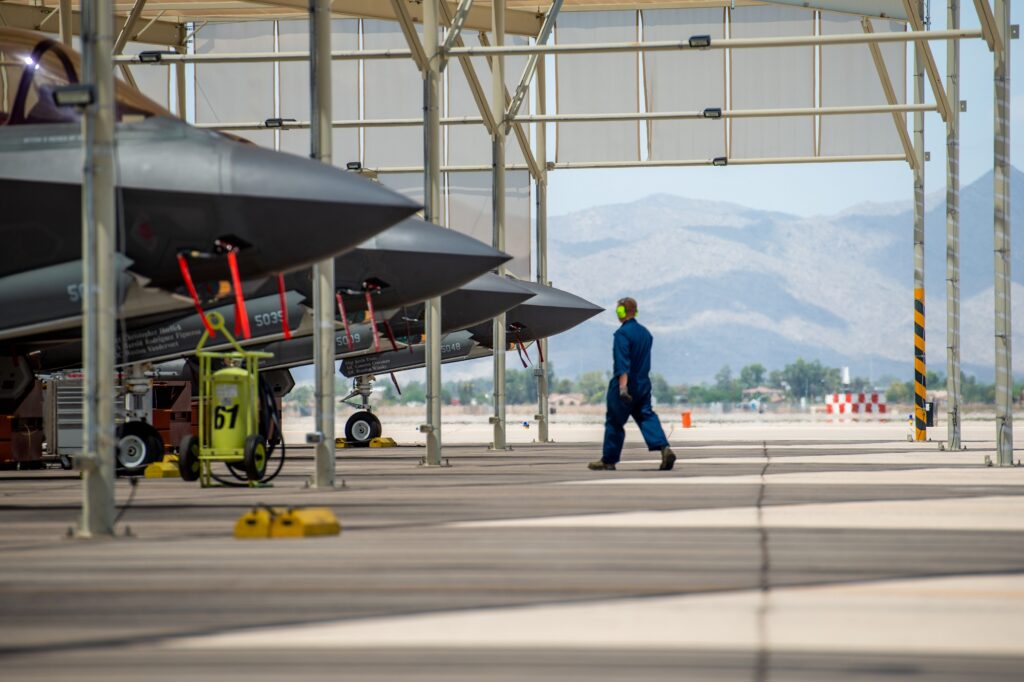An F-35A engine belonging to the US Air Force incurred substantial damage amounting to nearly $4 million due to the ingestion of a handheld flashlight.
The incident transpired at Luke Air Force Base in Arizona on March 15, 2023, under the supervision of two maintainers (identified as MM1 and MM2) assigned to the 62nd Aircraft Maintenance Unit, operating under the 56th Fighter Wing, and a third maintainer (MM3) assigned to the 187th Aircraft Maintenance Squadron, on an extended training tour with the 62 AMU. The F-35A fighter involved bears the tail number 14-5103 operated by the 56th Fighter Wing.
What happened?
The operation aimed to “install a metering plug into an engine fuel line and conduct a leak check on the new metering plug while the engine was running,” according to the final report of the USAF Aircraft Accident Investigation Board.
The maintenance procedures commenced with the F135 engine set to idle. Seven minutes into the test, the aircraft’s debris sensors detected foreign objects in both the inlet and exhaust. The engine ran for an additional five minutes to conduct the fuel leak check, during which no notifications of foreign objects were received. It was after the engine shutdown that the maintenance team reported abnormal noises during the spin-down.
Following the shutdown, MM1 conducted a post-operation servicing inspection, revealing damage to the engine blades. It was then discovered that a handheld flashlight had been ingested, rendering the $14 million engine beyond local repair.
The ingestion of the flashlight during the engine run caused damage to the second, third, fifth, and sixth-stage rotors, fuel nozzle, bypass duct, high-pressure compressor, high-pressure turbine, and fan inlet variable vane. The incident resulted in an estimated $3,933,106 in damage to the engine.
Human error identified as the prime cause
The investigation identified the mishap’s cause as an incomplete tool kit inventory and a failure to comply with joint-service technical data guidance before the engine start. MM1 neglected to clear the inlet of foreign objects after completing the required inspections, resulting in the flashlight being inadvertently left on the lip of the intake.
“I find, by a preponderance of evidence, that the mishap was caused by MM1 not executing a complete inlet inspection and failing to conduct a tool kit inventory prior to engine run operations,” Colonel Sean Brammer-Hogan, President of the Accident Investigation Board, stated.
Investigators also highlighted problems with the F-35’s Autonomic Logistics Information System or ALIS as a substantially contributing factor. Among the issues cited, the board found a lack of real-time network connectivity, plus an abundance of irrelevant information causing complacency from users.

